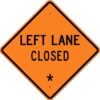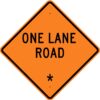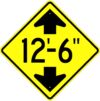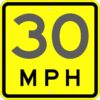Origins of Road and Traffic Signs
The use of road signs dates back to ancient Rome with milestones indicating distances between cities. The modern road signs appeared in the late 19th century with the rise of the automobile industry. These signs were simple and mostly made of wood or metal, and served to warn drivers of potential dangers ahead.
Standardization of Road and Traffic Signs
Eventually, around the beginning of the 20th century road and traffic signs began to be standardized. The United Kingdom introduced the first standardized traffic sign system in 1908. This new standardized traffic sign system was later adopted by other countries around the world. This system included familiar signs such as the stop sign, the yield sign, and the speed limit sign. The standardization of road and traffic signs was closely tied to the growth of international travel and commerce.
Vienna Convention on Road Signs and Signals
The United Nations Economic Commission for Europe (UNECE) established a uniform system of road signs and signals in 1949. It was known as the Vienna Convention on Road Signs and Signals. This convention standardized road signs across Europe and provided a framework for other countries to follow. The Vienna Convention has been widely adopted, but some countries still use different symbols and colors for their road signs.
Impact on Road Safety
The overall impact on road safety of the standardization of road and traffic signs has been significant. It has allowed drivers from different countries to recognize and understand the same signs, reducing confusion and accidents. It has also enabled the development of more sophisticated traffic management systems, including traffic lights and electronic message boards.
Challenges and Future of Road and Traffic Signs
As transportation technology has advanced, new types of signs have had to be developed to keep pace with changing needs. Real-time traffic information displayed on electronic signs has become increasingly common in recent years. However, cultural and linguistic differences have sometimes made it difficult to develop truly universal road sign systems. The challenge of creating truly universal sign systems continues, while road and traffic signs will continue to evolve to meet the demands of transportation and society.









